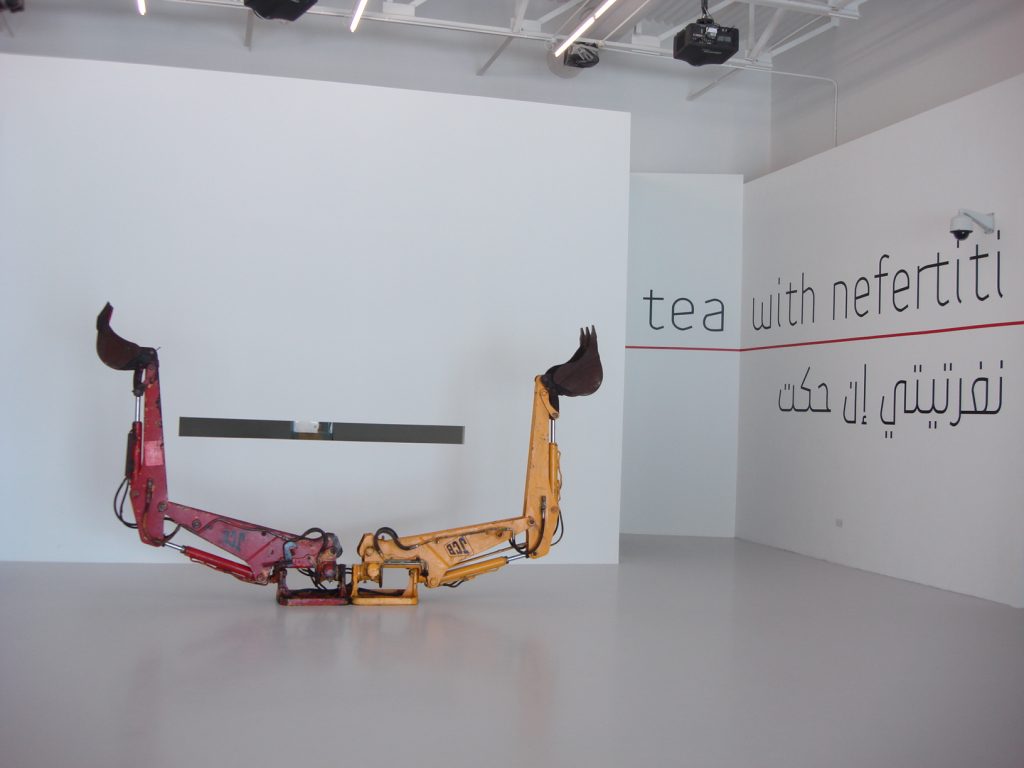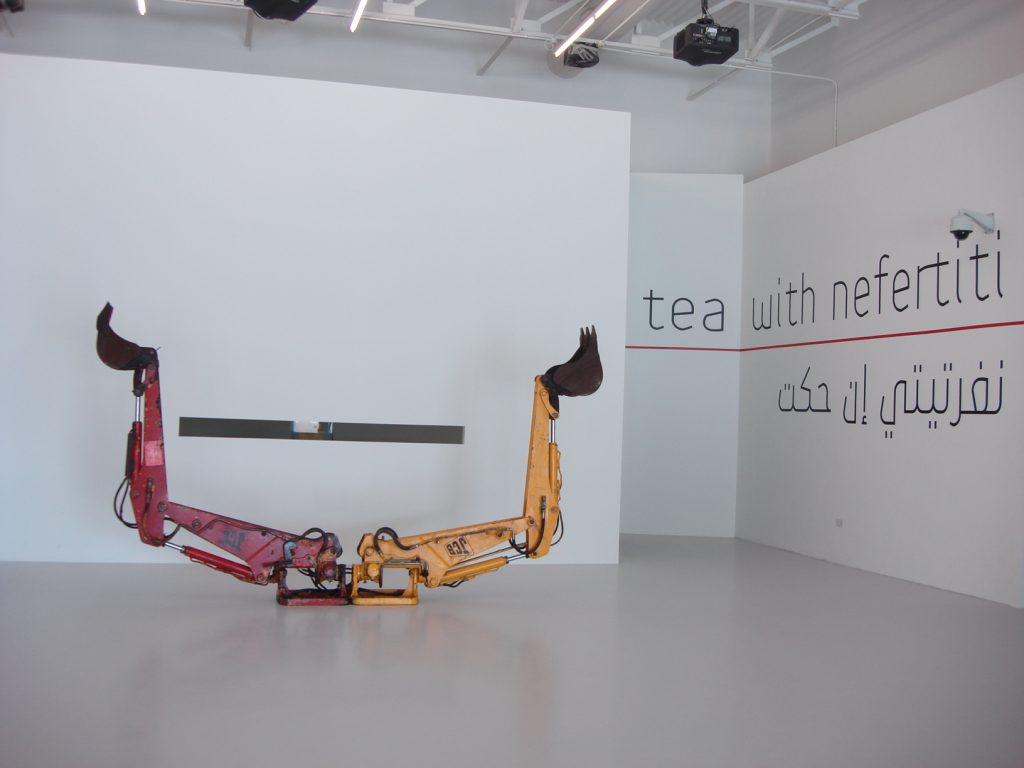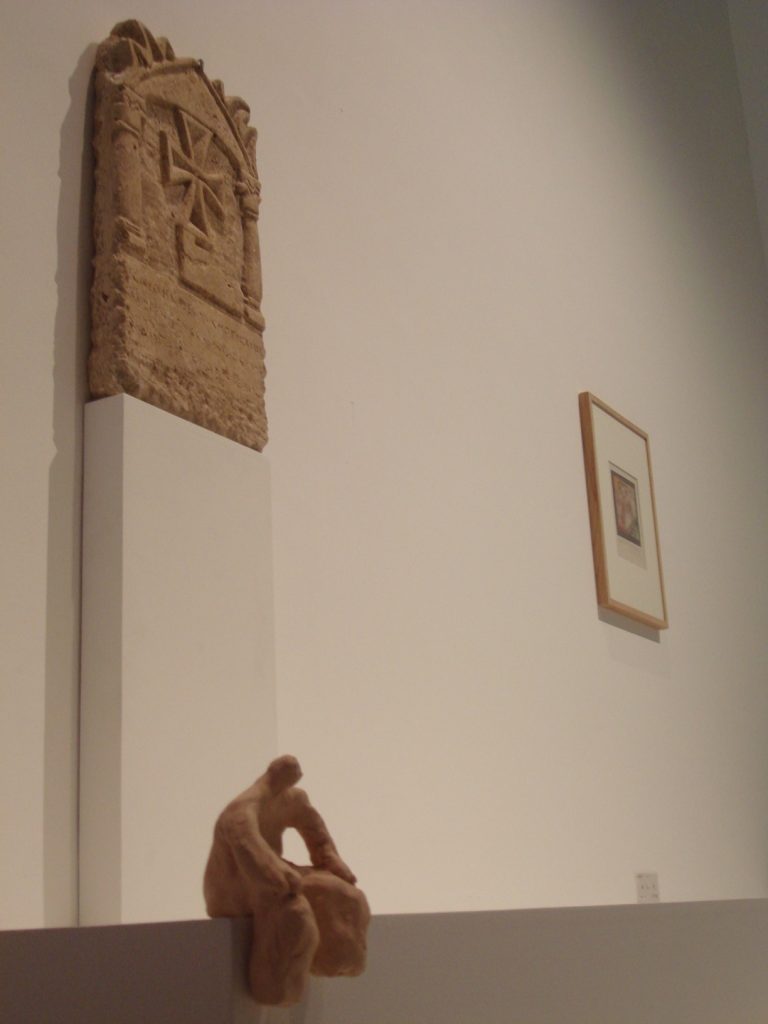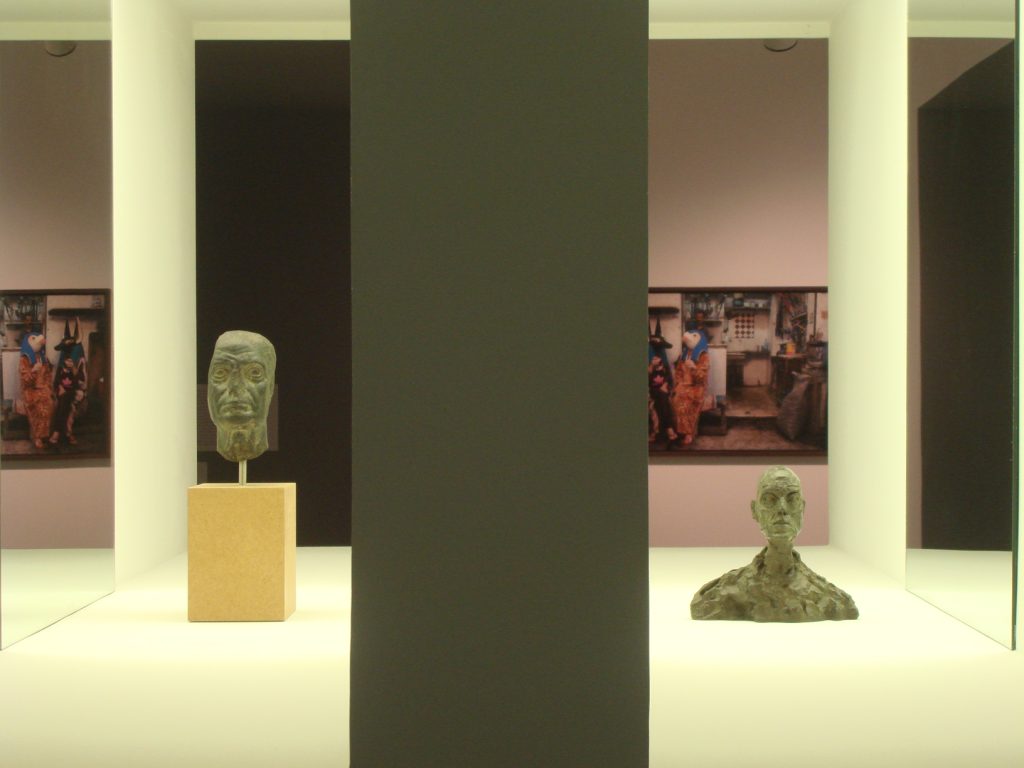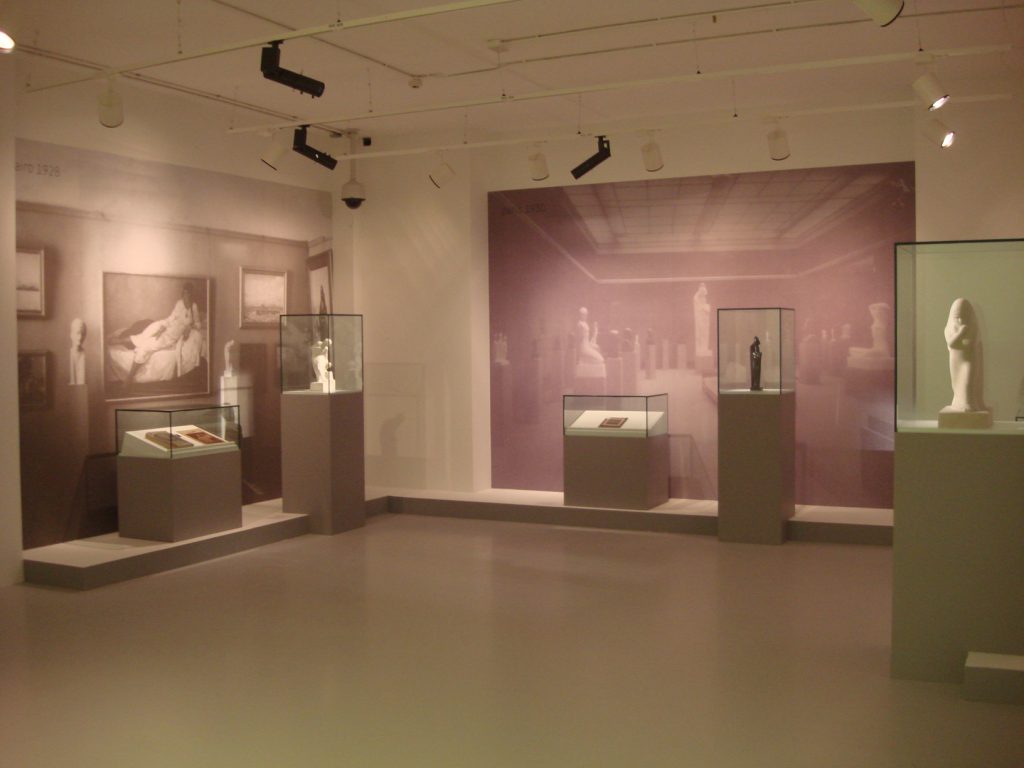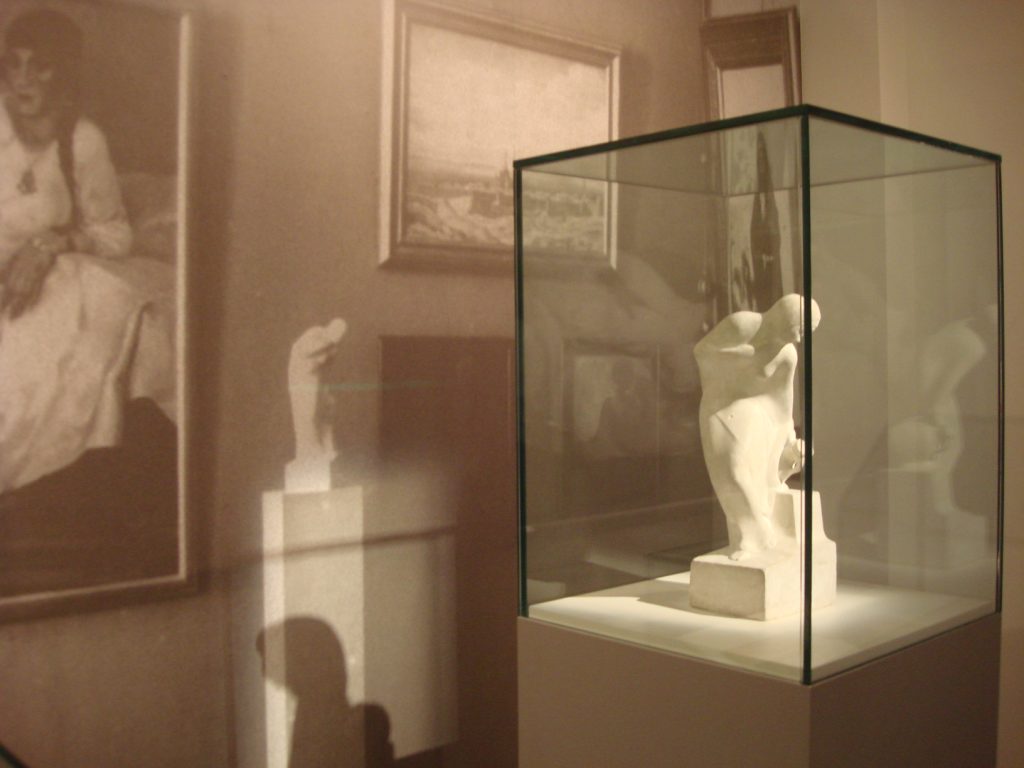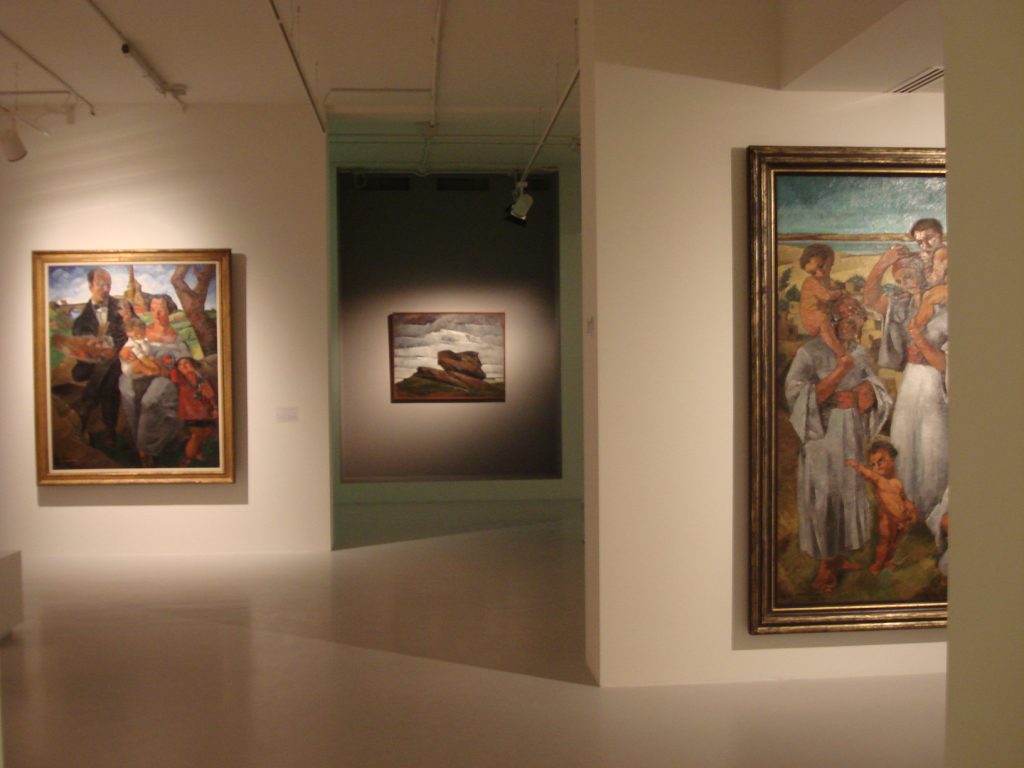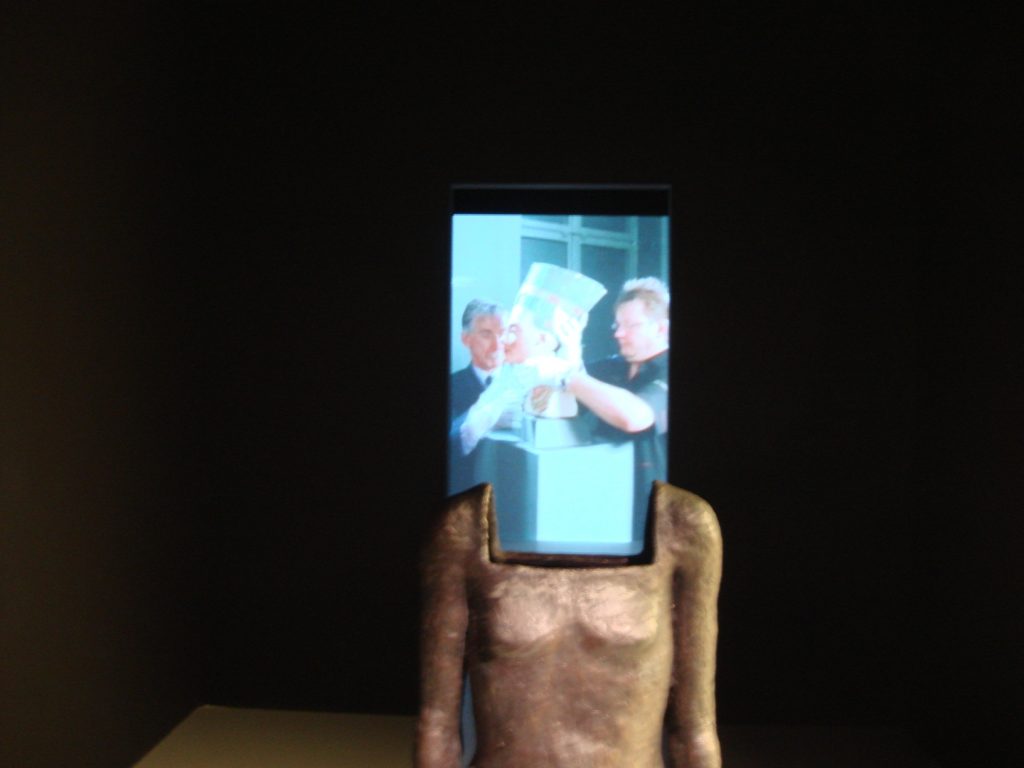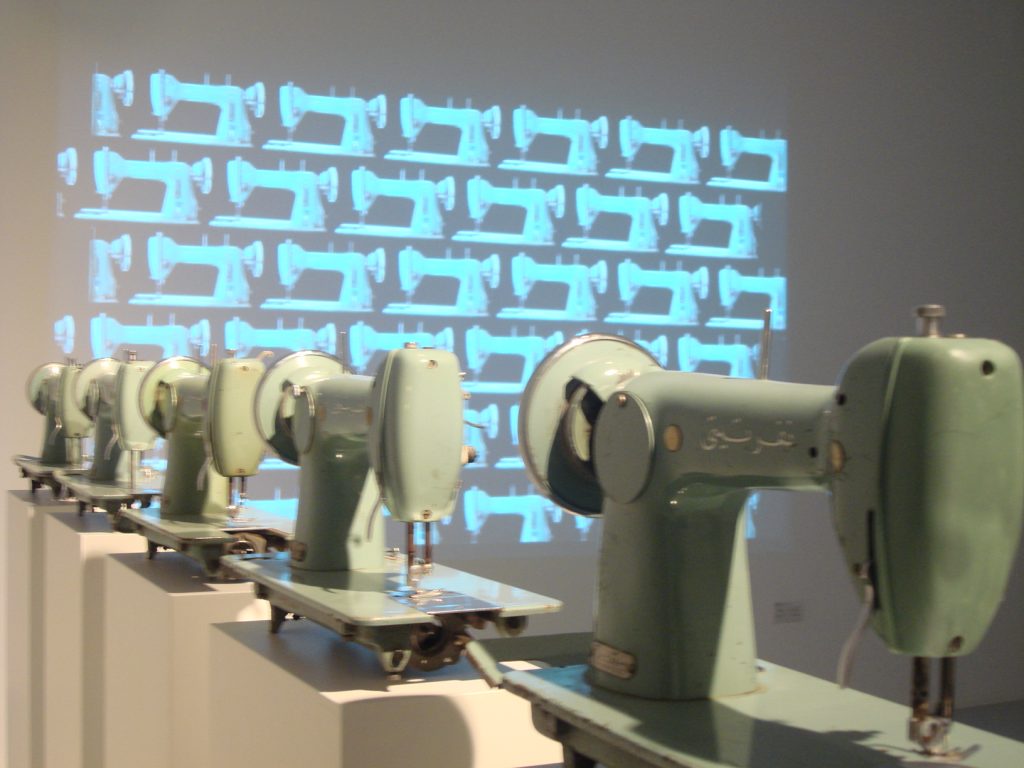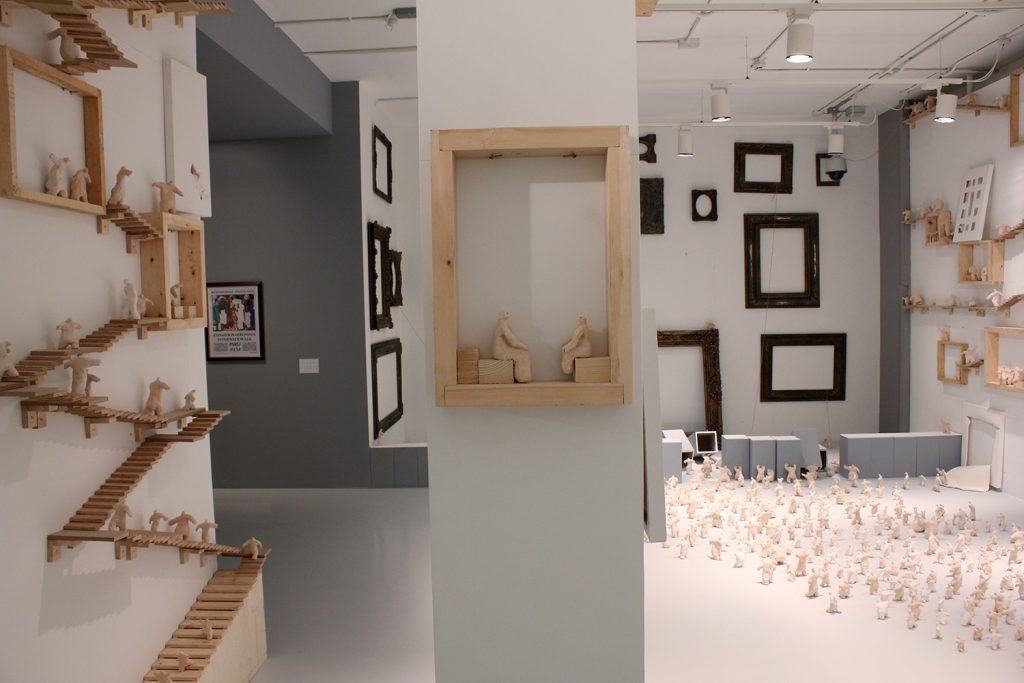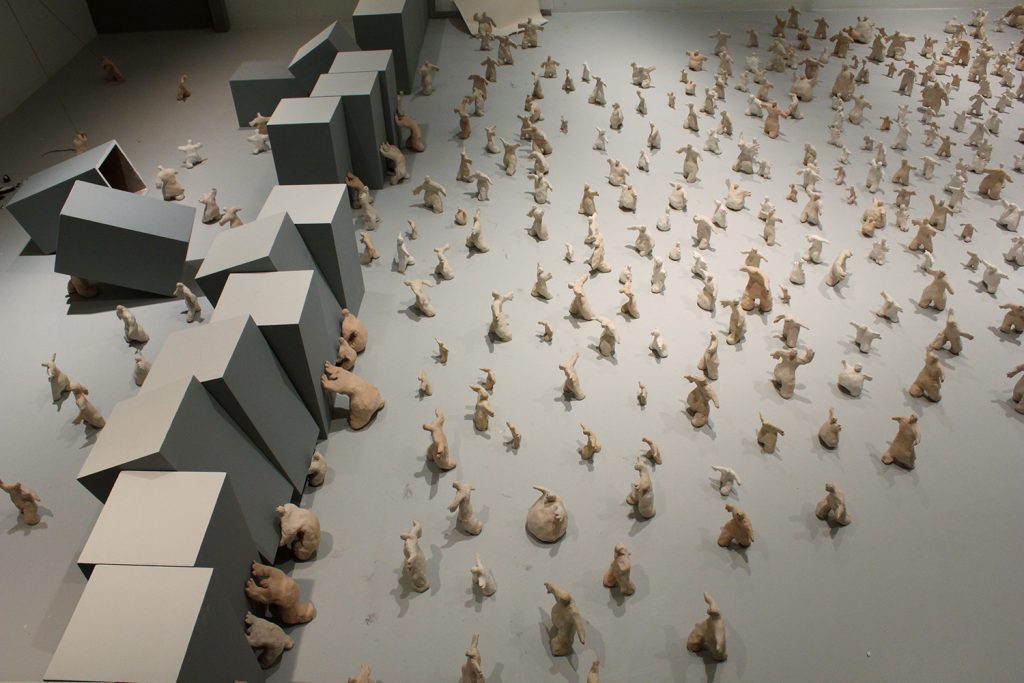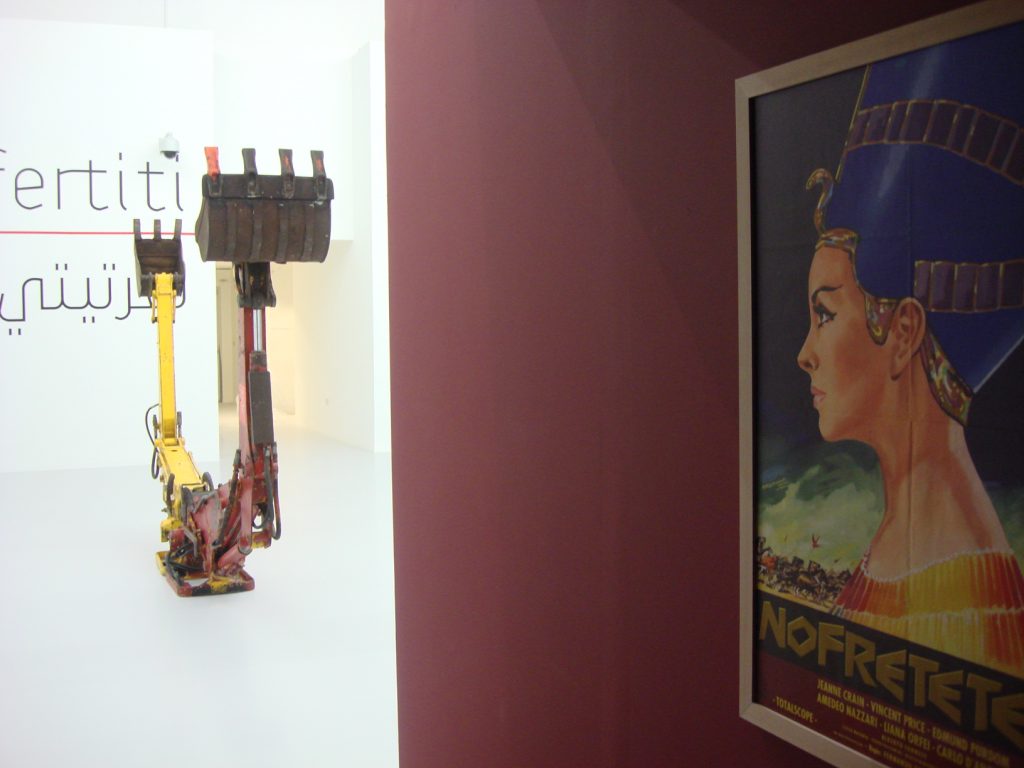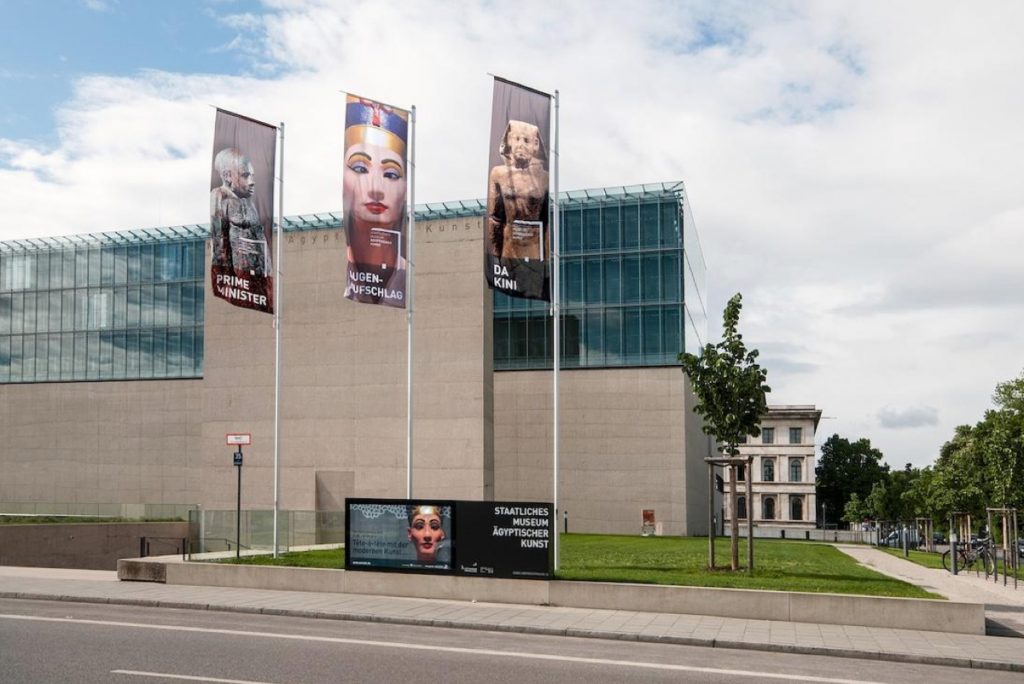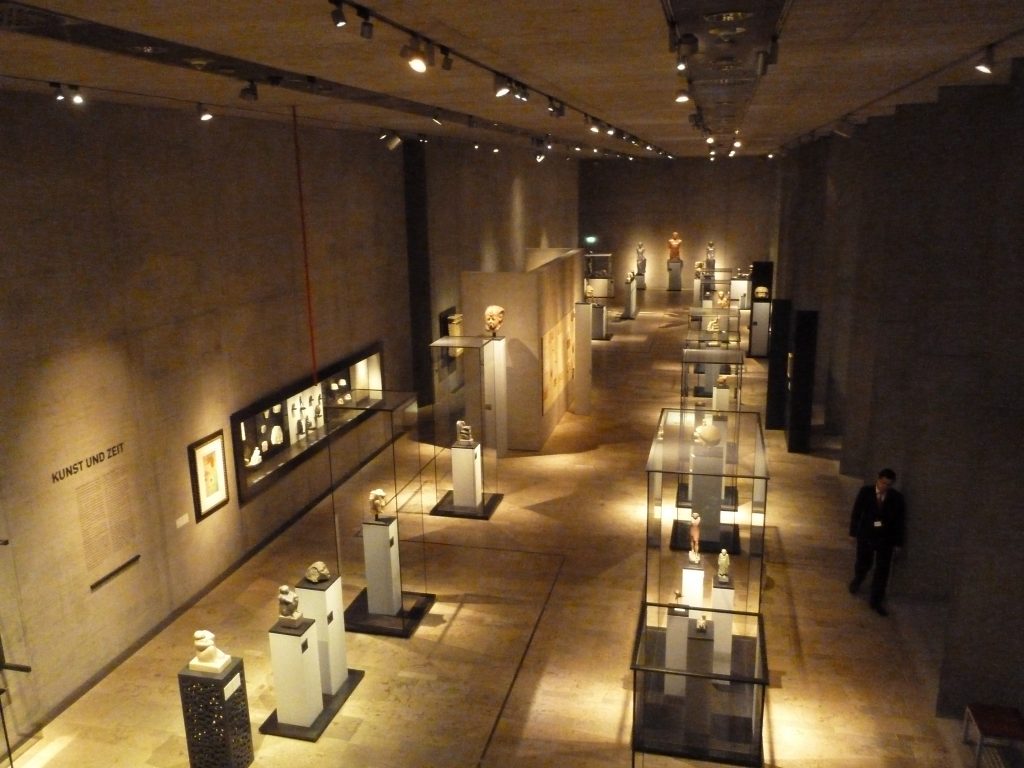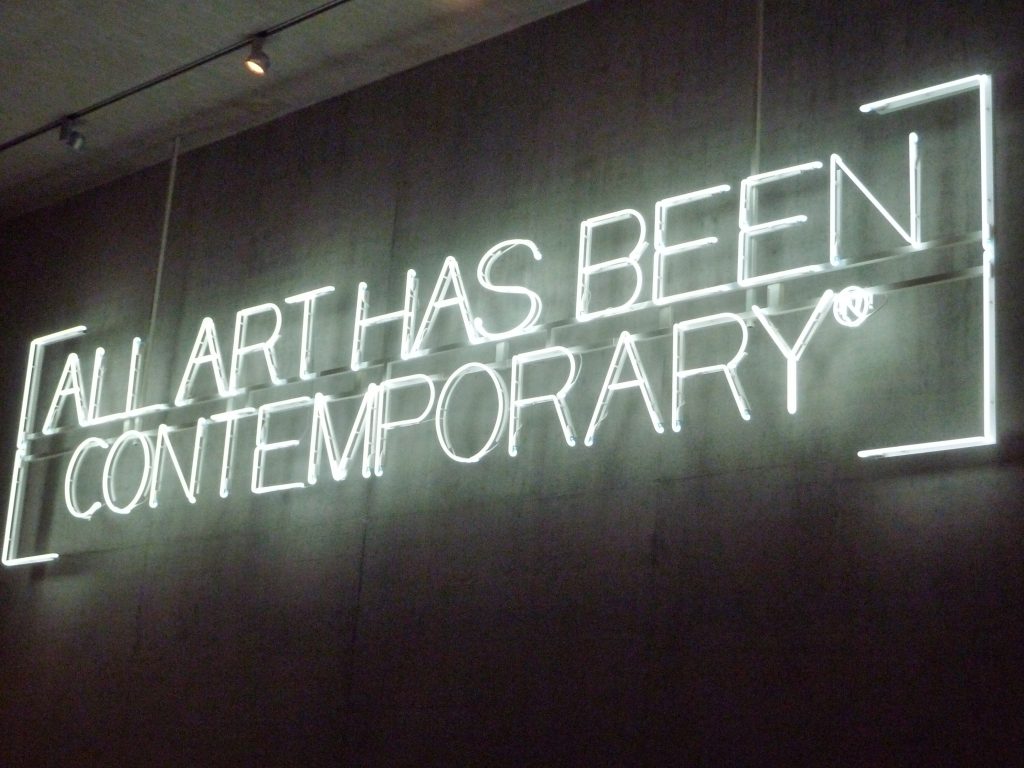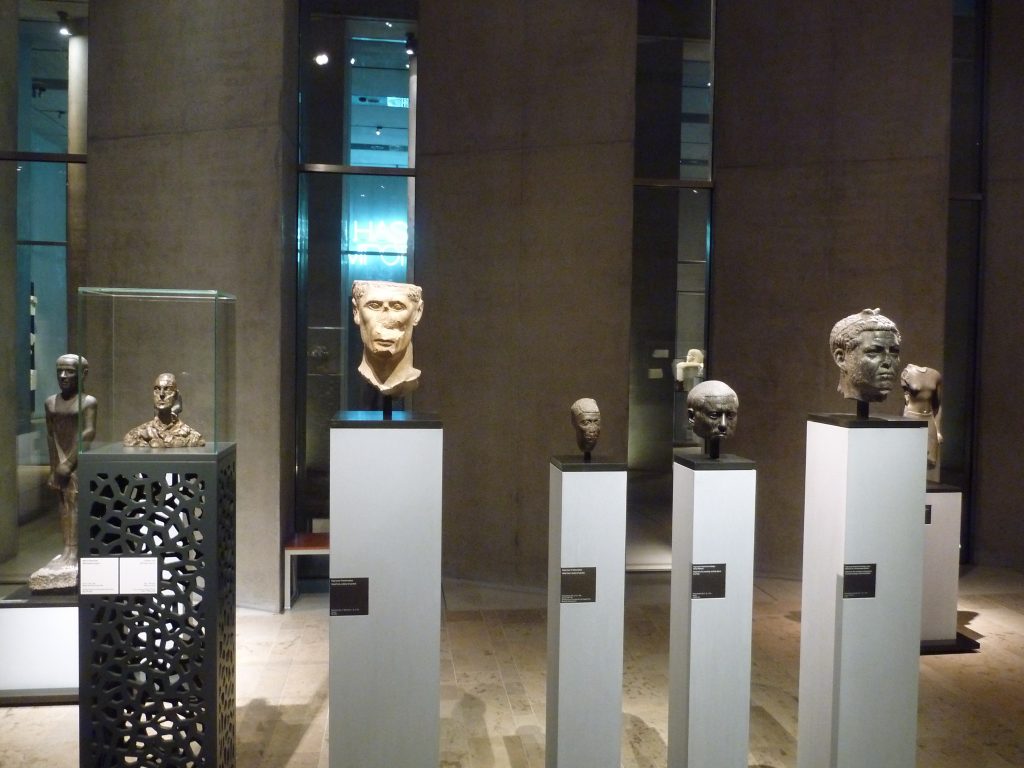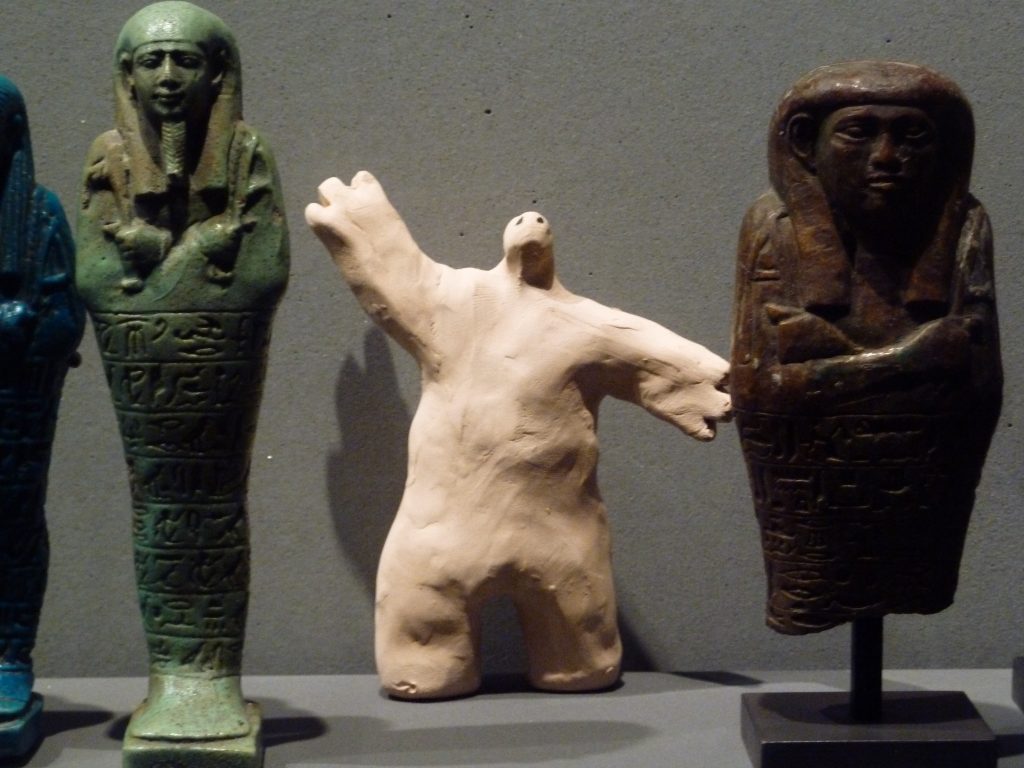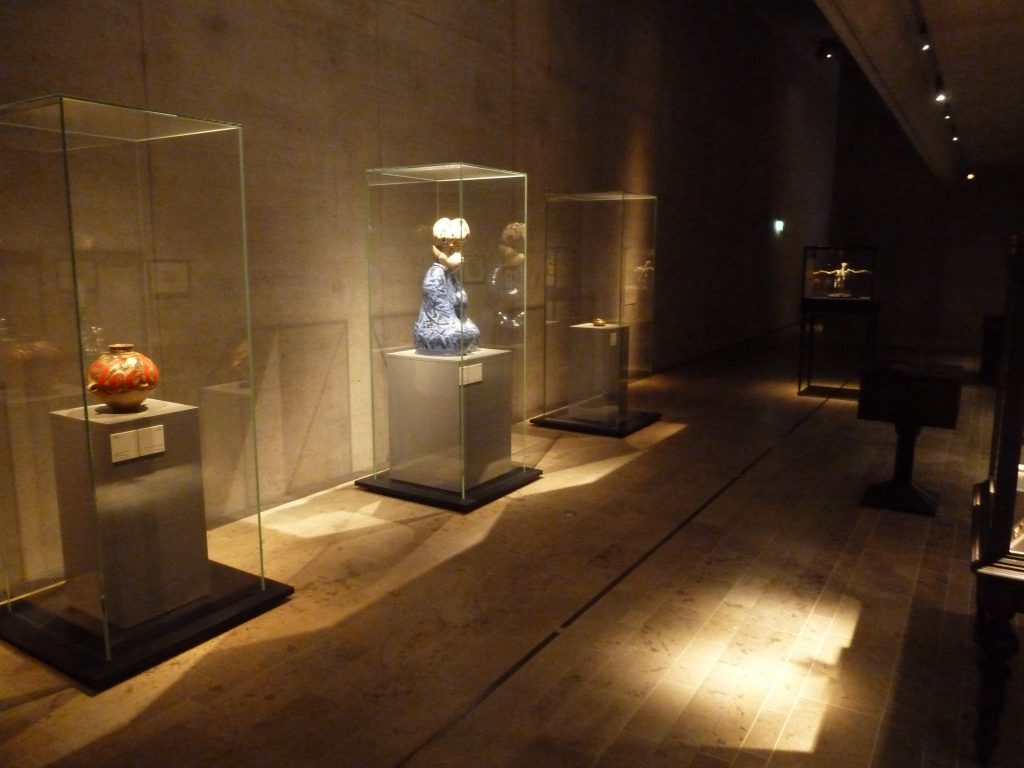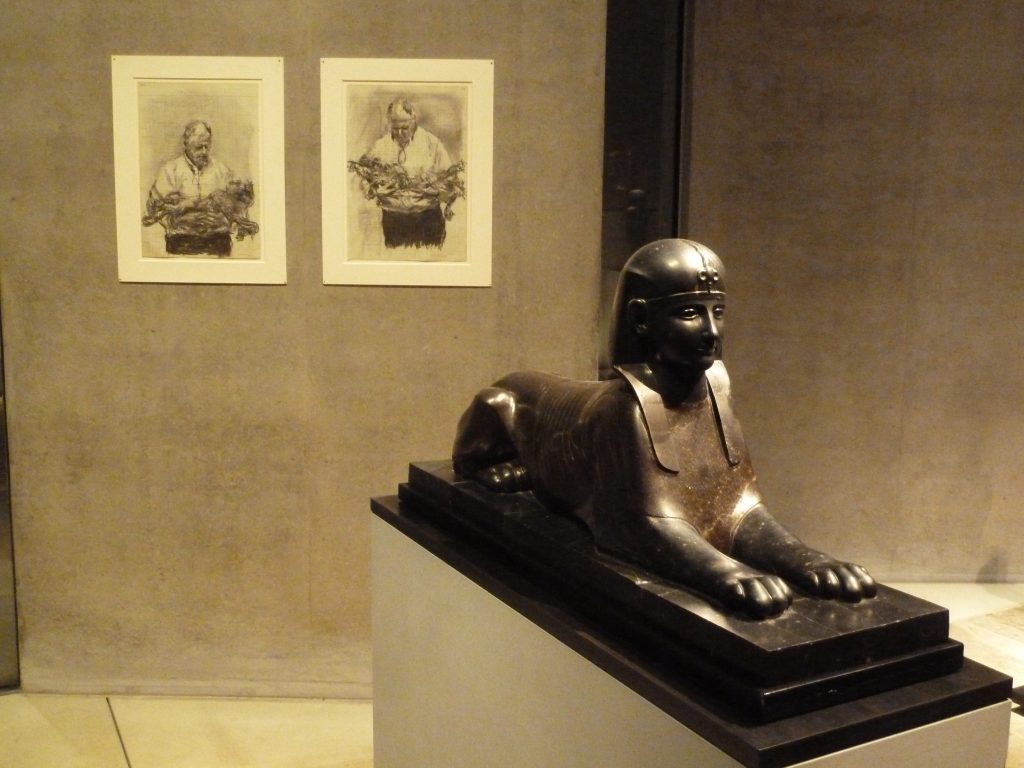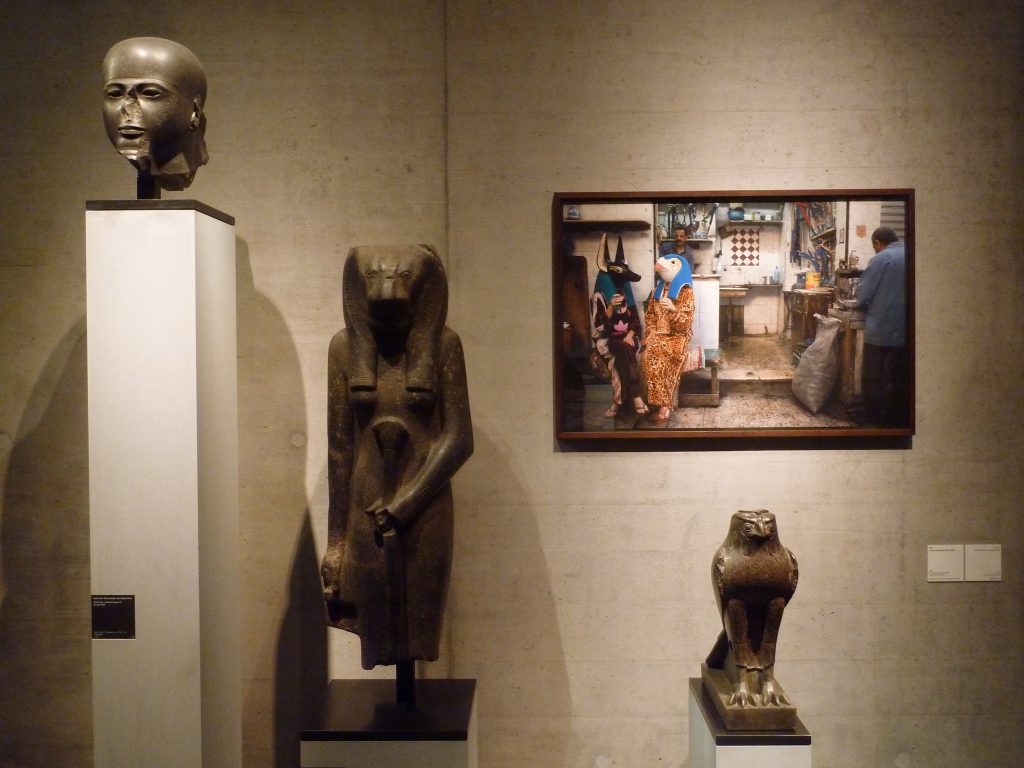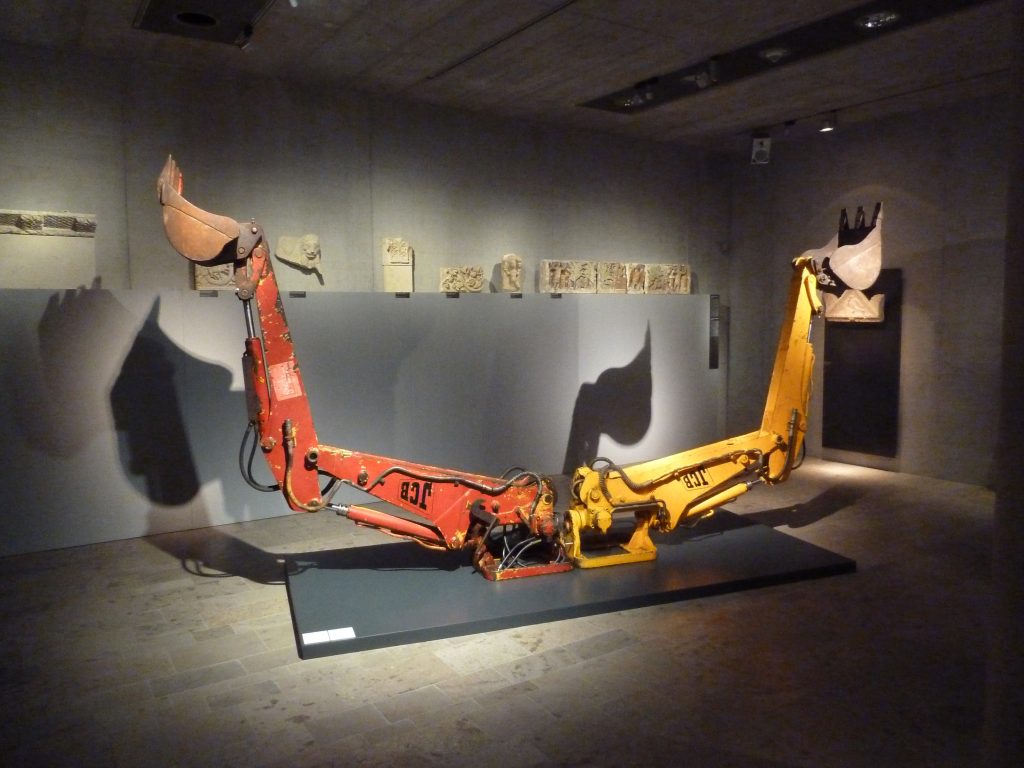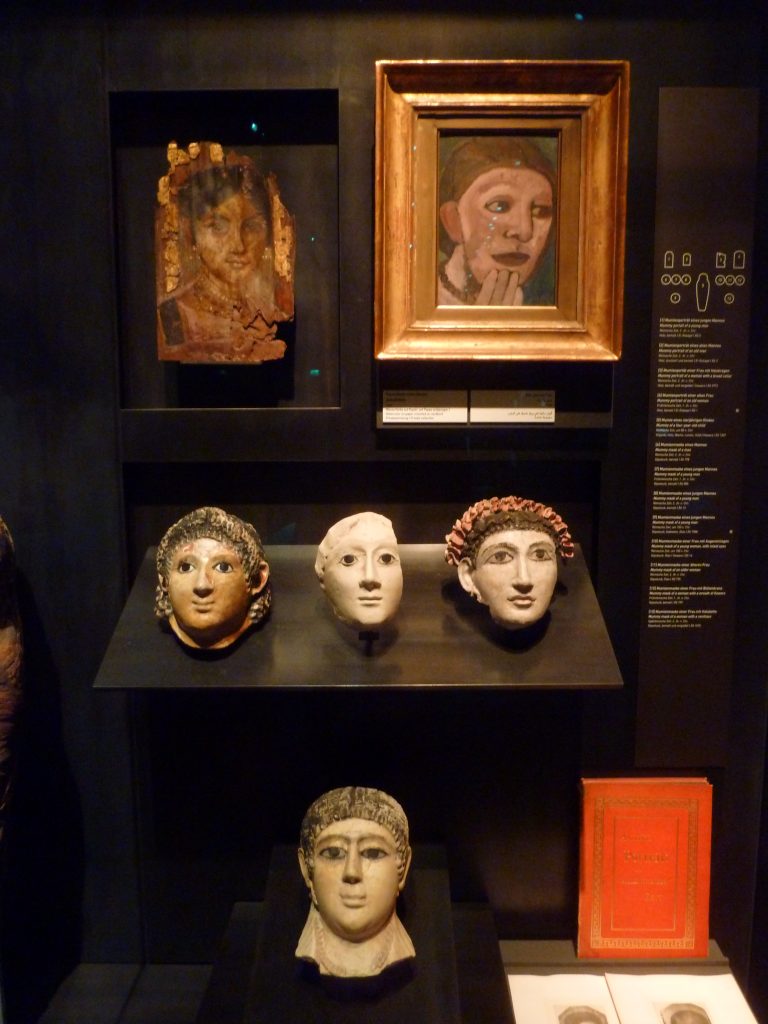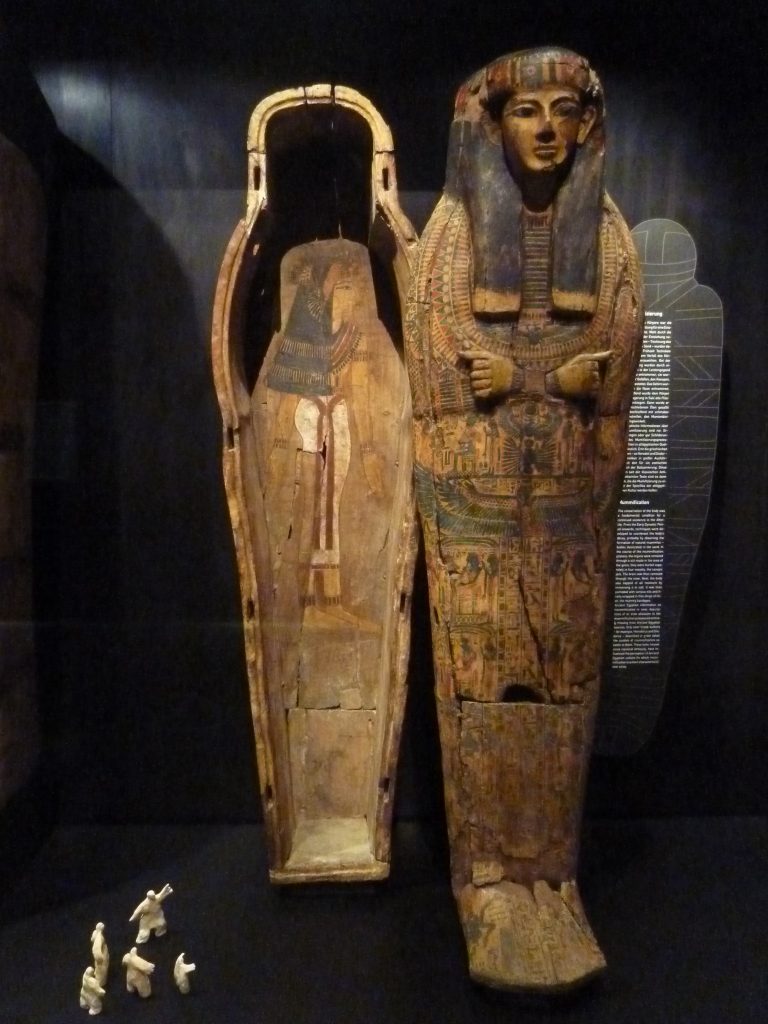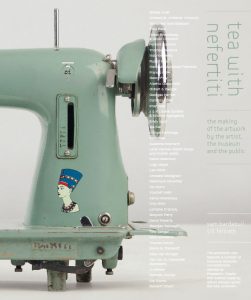Tea with Nefertiti explores the visual and literary mechanisms by which artworks come to acquire a range of meanings and functions that can embody a number of diverse, and at times conflicting narratives. Through employing the Nefertiti bust as a metaphorical thread, and by interrogating the contested history of Egyptian Museum collections from the 19th century onwards, the exhibition is concerned with the critique of museology, the staging of the artwork and the writing of art-historical narrative as a means of forming and informing cultural otherness.
The exhibition is organized along three thematic chapters that reflect on the process of appropriation, de-contextualization and re-semanticisation that an artwork undergoes as it travels through time and place: The “Artist” section highlights the artist’s formalistic departures and contributions as evidenced through the artworks on display. The “Museum” section examines the institutionalization of art and interrogates how the contextualization of an artwork bestows on it new meanings and functions. The “Public” section maps out the unpredictable evolution of art as it expands beyond the atelier and the museum and gets coerced into the writing of contested meta-narratives.
Tea with Nefertiti is constructed around a series of juxtapositions and groupings of historic, modern and contemporary artworks and documents. This is intended as a gesture towards breaking away from more familiar museum classifications that have been conventionally based on geography, periods and style. The exhibition proposes alternative paradigms for art historical construction that transcend the confines of geo-temporal linearity. These constructs are conceived as pointers to an ongoing process of cultural transfer, of appropriation and negotiation that exists beyond the parameters of a much-contested historiography.
Valerio Adami, Ghada Amer, Armand (b. Armenak Arzrouni), Eduardo Arroyo, Mohamad-Said Baalbaki, Taha Belal, Adam Broomberg & Oliver Chanarin, Alberto Corazón, Honoré Daumier, Thomas Demand, Maurice Denis, Frantisek Drtikol, Rudolf Ernst, Manuel Falces, Mamduh Muhamad Fathallah, Francis Frith, Georg Frey, Alberto Giacometti, Gilbert & George, Julio González, Georges Henein, Candida Höfer, Iman Issa, J & K (Janne Schäfer & Kristine Agergaard), Emily Jacir, Ida Kar, William Kentridge, Paul Klee, Susanne Kriemann, Little Warsaw (Bálint Havas and András Gálik), Maha Maamoun, Luigi Mayer, Lee Miller, Amedeo Modigliani, Mahmoud Moukhtar, Vik Muniz, Youssef Nabil, Xenia Nikolskaya, Amy Nimr, Lorraine O’Grady, Grayson Perry, David Roberts, Rainer Ruthenbeck, Georges Sabbagh, Nida Sinnokrot, Robert Smithson, Thomas Struth, David G. Tretiakoff, Kees van Dongen, Van Leo (b. Alexander Boyadjian), Ai Weiwei, Ramses Younan, Ala Younis, and Bassem Yousri
The exhibition also includes a number of artworks that are conventionally labeled as Pharaonic, Coptic and Islamic by artists whose names are now unknown.
